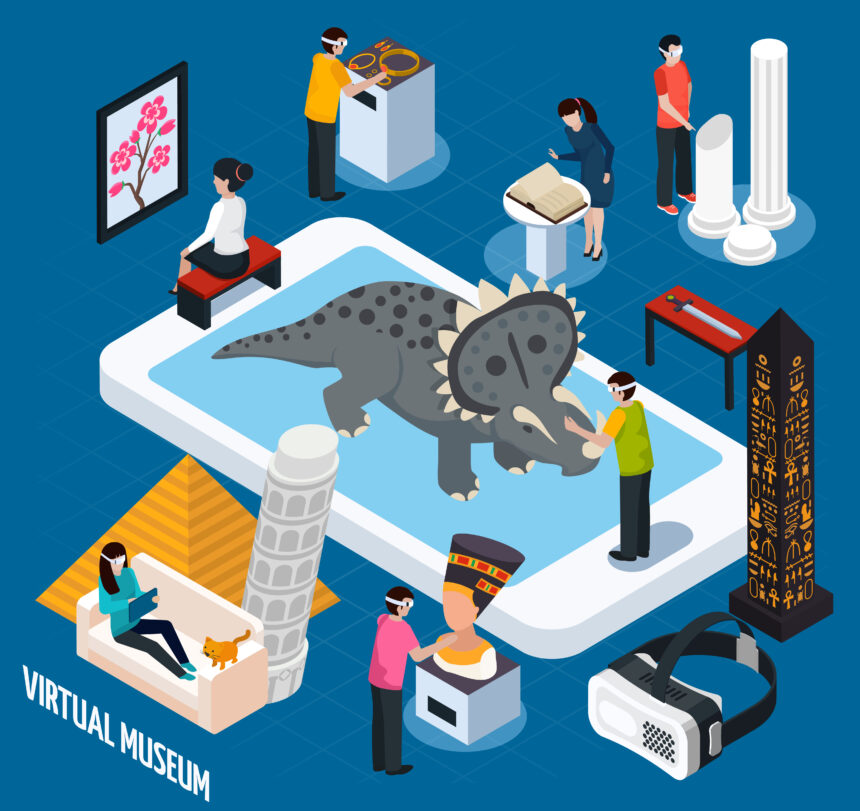South Africa is a country rich in cultural heritage, boasting a vibrant and diverse artistic tradition. From ancient rock art to contemporary masterpieces, the nation’s art and history reflect its complex past and the resilience of its people. In recent years, the emergence of non-fungible tokens (NFTs) and virtual museums has revolutionized the way we engage with and preserve art. This exciting technological development offers a unique opportunity to showcase South African art and history to a global audience while preserving its integrity for future generations.
NFTs, or non-fungible tokens, are digital assets that represent ownership or proof of authenticity of a particular item, such as artwork, music, videos, or even virtual real estate. What sets NFTs apart is that they are built on blockchain technology, making them secure, transparent, and immutable. Each NFT is unique and cannot be replicated, providing a digital certificate of ownership and provenance.
Virtual museums, on the other hand, are digital platforms that recreate the experience of visiting a physical museum. Through virtual reality (VR) technology, visitors can explore galleries, view artworks, and engage with historical artifacts from the comfort of their own homes. Virtual museums break down barriers of distance, time, and accessibility, enabling a global audience to experience and learn about different cultures and histories.
When NFTs and virtual museums converge, they create a powerful tool for preserving and showcasing South African art and history. By tokenizing artworks, artifacts, and historical documents, NFTs can attach a digital representation of these physical items, allowing them to be bought, sold, and collected in the digital realm. This process not only provides artists and collectors with a new revenue stream but also helps in the preservation and promotion of South African culture.
For instance, imagine a virtual museum dedicated to South African art and history. Visitors can navigate through various galleries showcasing different artistic periods and movements, from the rock art of the San people to the contemporary works of prominent South African artists. Each artwork is accompanied by an NFT, representing its authenticity and ownership. Users can view the artwork in high resolution, read detailed descriptions, and even interact with supplementary multimedia content, such as artist interviews or historical context.
The integration of NFTs in virtual museums also opens up possibilities for collaboration and education. Artists can create limited editions of their artworks as NFTs, offering them for sale or as part of crowdfunding campaigns to support cultural initiatives. Museums and educational institutions can partner with artists and collectors to curate virtual exhibitions, providing valuable insights into South African art and history. Additionally, the revenue generated from NFT sales can be reinvested in conservation efforts, community projects, or art scholarships.
Furthermore, the decentralized nature of blockchain technology ensures that ownership and provenance of South African art and historical artifacts are transparent and tamper-proof. This feature is particularly crucial in the context of South Africa, where colonialism, apartheid, and looting have resulted in the loss and dispersion of many valuable cultural treasures. By tokenizing these items, NFTs can create a digital trail that traces their origins and ownership, making it harder for illicit trade and providing a means for restitution and repatriation.
While NFTs and virtual museums present exciting opportunities, it is important to address some challenges and concerns. The environmental impact of blockchain technology and the high energy consumption associated with NFT transactions should be taken into account and mitigated. Additionally, ensuring equitable representation and access to South African art and history in virtual spaces requires careful curation, collaboration, and inclusivity.
In conclusion, the emergence of NFTs and virtual museums offers an innovative way to showcase South African art and history to a global audience. By leveraging blockchain technology and virtual reality, these platforms provide immersive experiences, preserve cultural heritage, and create new avenues for artists and collectors. As South Africa continues to celebrate its diverse artistic traditions and confront its complex history, NFTs and virtual museums can be powerful tools for fostering understanding, appreciation, and dialogue.










